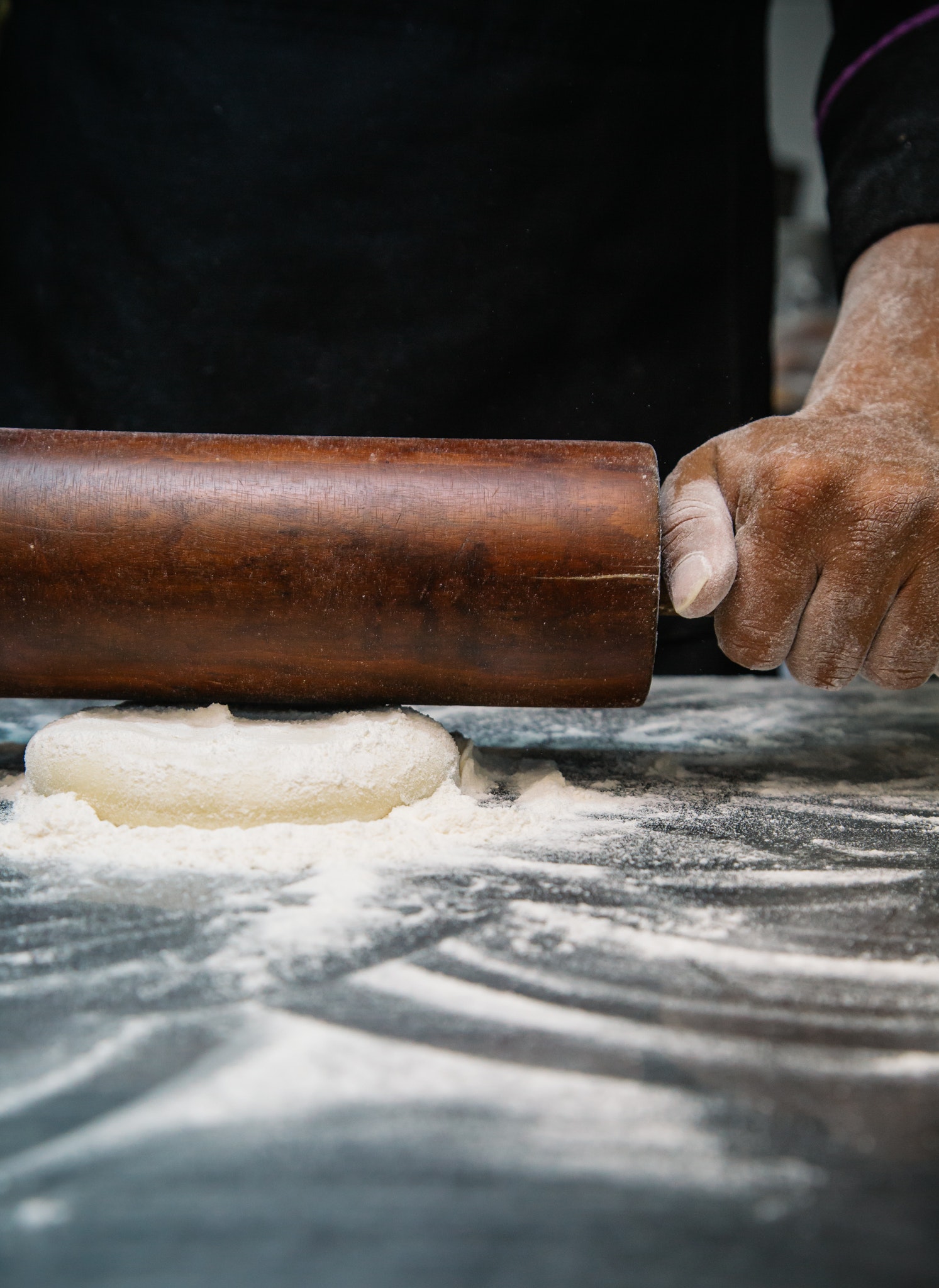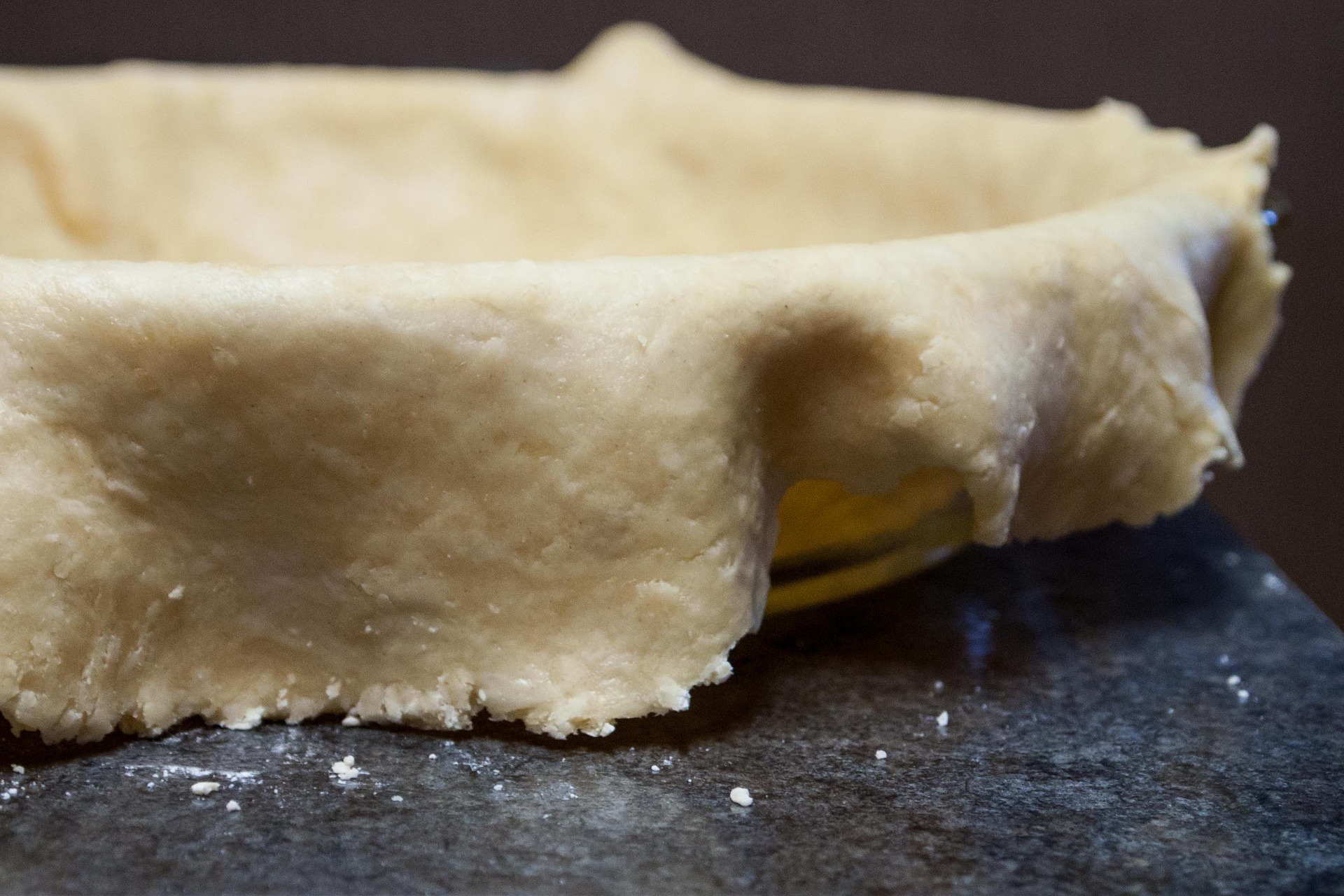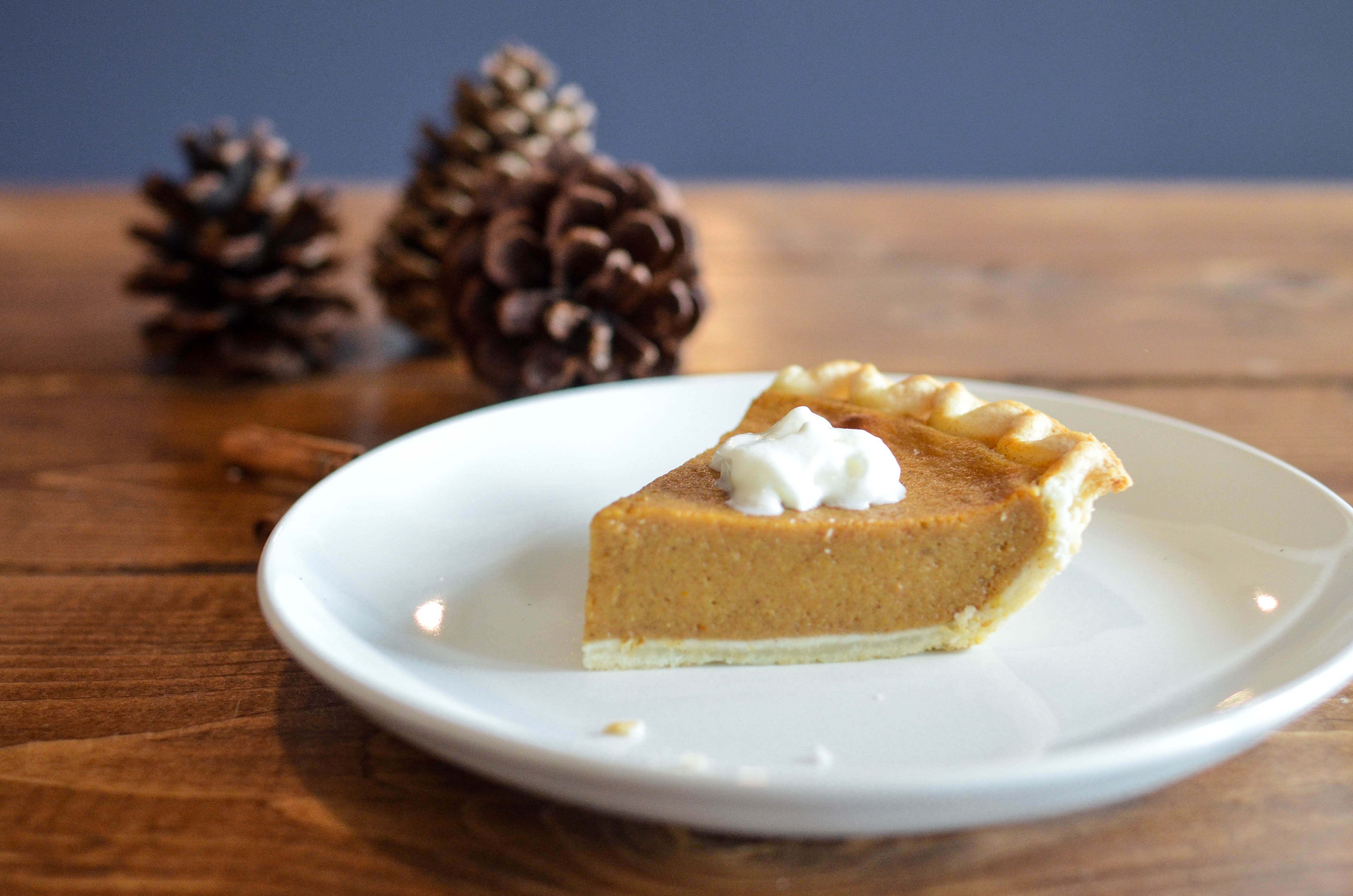By Megan Dorn for StrongerTogether.coop

I’ve always loved pie, in particular my Aunt Susie’s apple pie. When I was a kid she would bake one, wrap it up and give it to me for my birthday. Did I sit around the dinner table and share the delicious pie with my family? Absolutely not. I would literally hide it under my bed, devouring a slice before school, another after school and usually one more before bed… then repeat. That’s how good it was (and still is!).
Pie is one of those all-American, all-seasons treats that is always better homemade. It is also incredibly versatile. The size, shape and design can be tailored to the baker’s own liking and creativity and the fillings can be easily changed to reflect the ebb and flow of the seasons.
The 3:2:1 pie dough ratio
The “3” in this ratio is flour. I like to use pastry flour because it contains less gluten than all-purpose flour and therefore creates a more tender crust, but all-purpose flour will work just fine if that’s what you have on hand. The “2” is fat. Butter is the most common type of fat used, but other solid fats will work as well. Lard produces some of the flakiest crusts I’ve ever tasted and I’ve successfully used coconut oil to create a vegan crust. I’ve even substituted chicken or bacon fat for a portion of the fat amount in savory applications. Whatever fat you choose, it must be cold and solid (no liquid oils as they don’t create the necessary air pockets for a light, flaky crust). The “1” is ice cold water. Not much to explain here, but I will say that I dissolve about 1/4 teaspoon of salt per batch to make the water extra cold.

So, now what? The amounts in the 3:2:1 ratio refer to the weight (e.g. 3 oz. flour, 2 oz. fat, 1 oz. water). With those exact measurements you could make a pie crust, but it would be quite small. To know exactly how much dough you need you must first know how big your pie pan is. A basic rule of thumb: one inch of pan equals one ounce of dough. Since all of my pie pans are nine inches, I almost always say that one batch is nine ounces, giving me the following recipe.
Pie dough recipe by weight
4.5 ounces flour + 3 ounces fat + 1.5 ounces water + 1/4 teaspoon salt = 9 ounces
How did I come up with those amounts? There’s a little math coming your way, so bear with me. We need a total of 9 ounces, and we’re dealing with 6 parts total (3 parts flour + 2 parts fat + 1 part water), so:
9 oz./ 6 parts = 1.5 oz./ per part
Which means:
3 x 1.5 oz = 4.5 oz flour
2 x 1.5 oz = 3 oz. fat
1 x 1.5 oz. = 1.5 oz. water
And that’s your recipe. If you’re making a pie that requires a top crust, just double the recipe

I was never a star student in math class, so if you need to digest that a bit, I totally understand. Take a moment…
So what if you don’t happen to have a kitchen scale? Never fear. One cup of flour weighs roughly 4.5 ounces. How convenient! And 1 ounce equals 2 tablespoons. With this in mind, here’s the same recipe as above for a single batch.
Pie dough recipe by measurements
1 cup flour + 6 tablespoons fat + 3 tablespoons water + 1/4 teaspoon salt
How to mix pie dough
Now let’s talk method. The most important step is cutting the cold fat into the flour. If you don’t do this, you’ll lose the flakiness, which, for me, makes pie worth every single calorie. The easiest way to do this is with a food processor. Add your flour and then your cold fat (cut up into smaller tablespoon-size chunks). Now pulse the machine until the mixture creates pea-size pieces of fat evenly distributed throughout the flour. With the machine running, stream in your water until the mixture forms a dough. You may need to add slightly more water if your mixture is too crumbly, but don’t add too much more or your crust will turn out tough. A little crumble is what you’re looking for and the uglier the dough, the better it tastes.
If you don’t have a food processor, you can cut your butter using a pastry blender, two butter knives (using the simple scissor cut method). Just put your flour in a bowl, add your cold butter or other fat and start cutting away until you get those pea-size pieces. Then make a well in the middle of your mixture, add your water and combine by hand until a dough forms.
Done!
Chill pie dough before using

Well, almost…if you’re just making a single batch, form the dough into a disk, wrap it up and place it in the fridge to chill for at least an hour. If you’re making a double batch, divide the dough in two and do the same thing. What do I do? I make a gigantic batch (usually six or seven at a time), wrap them up tightly in single, nine-ounce disks and keep them in the freezer for future use. When you need one, pull it from the freezer and thaw it in the refrigerator overnight.
How might you use your fabulous pie dough? Here are some tasty pie and tart recipes to whet your appetite.
Don’t have time to make your own pies from scratch? Just in time for the holidays, our house-made whole pies will be 30% off December 20-21 and pie slices will be $1 off December 18 through Christmas Eve. Want to make sure we have what you need (or need to request a wheat-free version)? Call our Bakery Department to make a special order at 859-278-1813 ext. 247.
